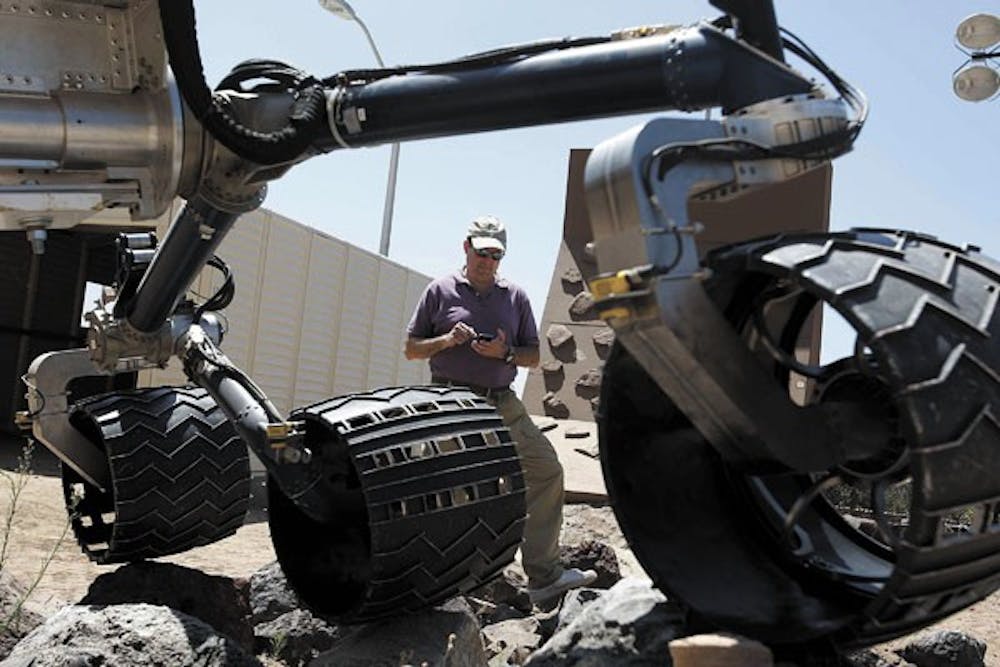 Brian Cooper tests mobility on a stripped down model of the Curiosity rover in Pasadena, California. Cooper is the lead rover driver of Curiosity which is currently exploring Mars. (Gary Friedman/Los Angeles Times/MCT)
Brian Cooper tests mobility on a stripped down model of the Curiosity rover in Pasadena, California. Cooper is the lead rover driver of Curiosity which is currently exploring Mars. (Gary Friedman/Los Angeles Times/MCT)“Touchdown confirmed.” Those words boomed over the public address system inside the Jet Propulsion Laboratory on Aug. 6 to indicate a successful landing on Mars for NASA’s newest Curiosity Rover.
Among those involved with the operation were members from the School of Earth and Science Exploration, included professors Meenakshi Wadhwa, Alberto Behar, Jim Bell and Jack Farmer.
The four professors directly oversee the data-collection instruments utilized by the rover as it explores Mars.
School of Earth and Science Exploration Director Kip Hodges was pleased with what the mission accomplished.
“It was a great thing, especially as most of the systems involved in the landing were new and untested in a planetary exploration environment,” Hodges said.
Bell’s role in the mission is operation of the three specialized cameras fixed onto the rover: the Mars Hand Lens Imager, Mars Descent Imager and the Mastcam.
Additionally, Bell consults with colleagues to direct the rover across the foreign Mars landscape in an effort to study the climate and geology of Mars.
“We have to keep in mind that this is absolutely a group activity,” Bell said. “There are over 300 scientists from all over the world helping us with this.”
Working alongside graduate student Lauren Edgar was present at the Mars landing.
“Overall we could not have asked for a smoother landing,” Edgar said. “The rover touched down on a great location.”
While working alongside some of the most highly respected luminaries in the science world, students have proven themselves critical to the mission’s operations, Bell said.
Edgar, along with other graduate students, analyzed pictures taken by the rover and maps out the planet’s geography.
“I have been involved in the construction of a geologic map for several areas, including Mount Sharp, which will help determine our long term drive path,” Edgar said.
Reach the reporter at mjgordo1@asu.edu




